Potřebujeme váš souhlas k využití jednotlivých dat, aby se vám mimo jiné mohly ukazovat informace týkající se vašich zájmů. Souhlas udělíte kliknutím na tlačítko „OK“.
ASTM E2371-13
Standard Test Method for Analysis of Titanium and Titanium Alloys by Direct Current Plasma and Inductively Coupled Plasma Atomic Emission Spectrometry (Performance-Based Test Methodology)
Automaticky přeložený název:
Standardní zkušební metoda pro analýzu Titan a slitiny titanu stejnosměrným proudem plazmy a indukčně vázanou plazmou atomová emisní spektrometrie (Performance-Based Zkušební metodika)
NORMA vydána dne 15.6.2013
Informace o normě:
Označení normy: ASTM E2371-13
Poznámka: NEPLATNÁ
Datum vydání normy: 15.6.2013
Kód zboží: NS-45166
Počet stran: 13
Přibližná hmotnost: 39 g (0.09 liber)
Země: Americká technická norma
Kategorie: Technické normy ASTM
Kategorie - podobné normy:
Anotace textu normy ASTM E2371-13 :
Keywords:
atomic emisson spectrometry, DCP, direct current plasma, ICP, inductively coupled plasma, performance-based test method, titanium, titanium alloys, ICS Number Code 71.040.50 (Physicochemical methods of analysis),77.120.50 (Titanium and titanium alloys)
Doplňující informace
| Significance and Use | ||||||||||||||||||||||||||||||||||||||||||||||||||||||||||||||||||||||||||||||||||||||||||||
|
5.1 This test method for the chemical analysis of titanium and titanium alloys is primarily intended to test material for compliance with specifications of chemical composition such as those under the jurisdiction of ASTM Committee B10. It may also be used to test compliance with other specifications that are compatible with the test method. 5.2 It is assumed that all who use this test method will be trained analysts capable of performing common laboratory procedures skillfully and safely and that the work will be performed in a properly equipped laboratory. 5.3 This is a performance-based test method that relies more on the demonstrated quality of the test result than on strict adherence to specific procedural steps. It is expected that laboratories using this test method will prepare their own work instructions. These work instructions will include detailed operating instructions for the specific laboratory, the specific reference materials used, and performance acceptance criteria. It is also expected that, when applicable, each laboratory will participate in proficiency test programs, such as described in Practice E2027, and that the results from the participating laboratory will be satisfactory. |
||||||||||||||||||||||||||||||||||||||||||||||||||||||||||||||||||||||||||||||||||||||||||||
| 1. Scope | ||||||||||||||||||||||||||||||||||||||||||||||||||||||||||||||||||||||||||||||||||||||||||||
|
1.1 This method describes the analysis of titanium and titanium alloys, such as specified by committee B10, by inductively coupled plasma atomic emission spectrometry (ICP-AES) and direct current plasma atomic emission spectrometry (DCP-AES) for the following elements:
1.2 This test method has been interlaboratory tested for the elements and ranges specified in the quantitative range part of the table above. It may be possible to extend this test method to other elements or broader mass fraction ranges as shown in the application range part of the table above provided that test method validation is performed that includes evaluation of method sensitivity, precision, and bias. Additionally, the validation study shall evaluate the acceptability of sample preparation methodology using reference materials or spike recoveries or both. Guide E2857 provides information on validation of analytical methods for alloy analysis. 1.3 Because of the lack of certified reference materials (CRMs) containing bismuth, hafnium, and magnesium, these elements were not included in the scope or the interlaboratory study (ILS). It may be possible to extend the scope of this test method to include these elements provided that method validation includes the evaluation of method sensitivity, precision, and bias during the development of the testing method. 1.4 Units—The values stated in SI units are to be regarded as the standard. No other units of measurement are included in this standard. 1.5 This standard does not
purport to address all of the safety concerns, if any, associated
with its use. It is the responsibility of the user of this standard
to establish appropriate safety and health practices and determine
the applicability of regulatory limitations prior to use.
Standard Practices for Apparatus,
Reagents, and Safety Considerations for Chemical Analysis of
Metals, Ores, and Related Materials Standard Terminology Relating to
Analytical Chemistry for Metals, Ores, and Related Materials
(Includes all amendments and changes 7/17/2023). ISO Guide 98-3 Uncertainty of measurement Part 3: Guide
to the Expression of Uncertainty in Measurement (GUM: 1995)-First
Edition Standard Guide for Spectrometric Analysis
of Reactive and Refractory Metals Standard Practice for Describing and
Specifying a Direct Current Plasma Atomic Emission Spectrometer Standard Guide for Interpretation and Use
of Results from Interlaboratory Testing of Chemical Analysis
Methods (Withdrawn 2015) Standard Practice for Conducting an
Interlaboratory Study to Evaluate the Performance of an Analytical
Method Standard Practice for Describing and
Specifying Inductively Coupled Plasma Atomic Emission
Spectrometers Standard Practice for Verification and
Use of Control Charts in Spectrochemical Analysis (Withdrawn
2019) Standard Guide for Determination of
Various Elements by Direct Current Plasma Atomic Emission
Spectrometry Standard Practice for Conducting
Proficiency Tests in the Chemical Analysis of Metals, Ores, and
Related Materials Standard Specification for Reagent
Water ISO Guide 31 Reference Materials-Contents of
Certificates and Labels ISO/IEC 17025 Requirements for the Competence of
Calibration and Test Laboratories Standard Guide for Validating Analytical
Methods ISO Guide 34 General Requirements for the Competence
of Reference Material Producers |
Podobné normy:
Historická
1.12.2012
Historická
1.2.2014
Historická
1.6.2011
Historická
1.10.2010
Historická
15.3.2012
Historická
1.6.2012
Odebírejte informace o nově vydaných normách ZDARMA:
Chcete pravidelně odebírat informace o nově vycházejících normách z celého světa a to zcela zdarma?
Přihlašte se k odběru. Vše je velice jednoduché a absolutně ZDARMA.
Na výběr máte vydavatele z celého světa.


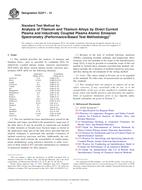
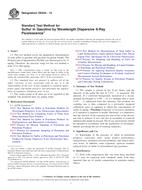 ASTM D6334-12
ASTM D6334-12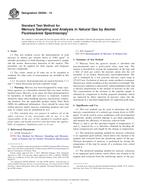 ASTM D6350-14
ASTM D6350-14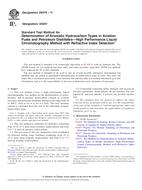 ASTM D6379-11
ASTM D6379-11 ASTM D6420-99(2010)..
ASTM D6420-99(2010)..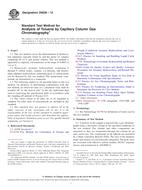 ASTM D6526-12
ASTM D6526-12 ASTM D6563-12
ASTM D6563-12
 Cookies
Cookies
